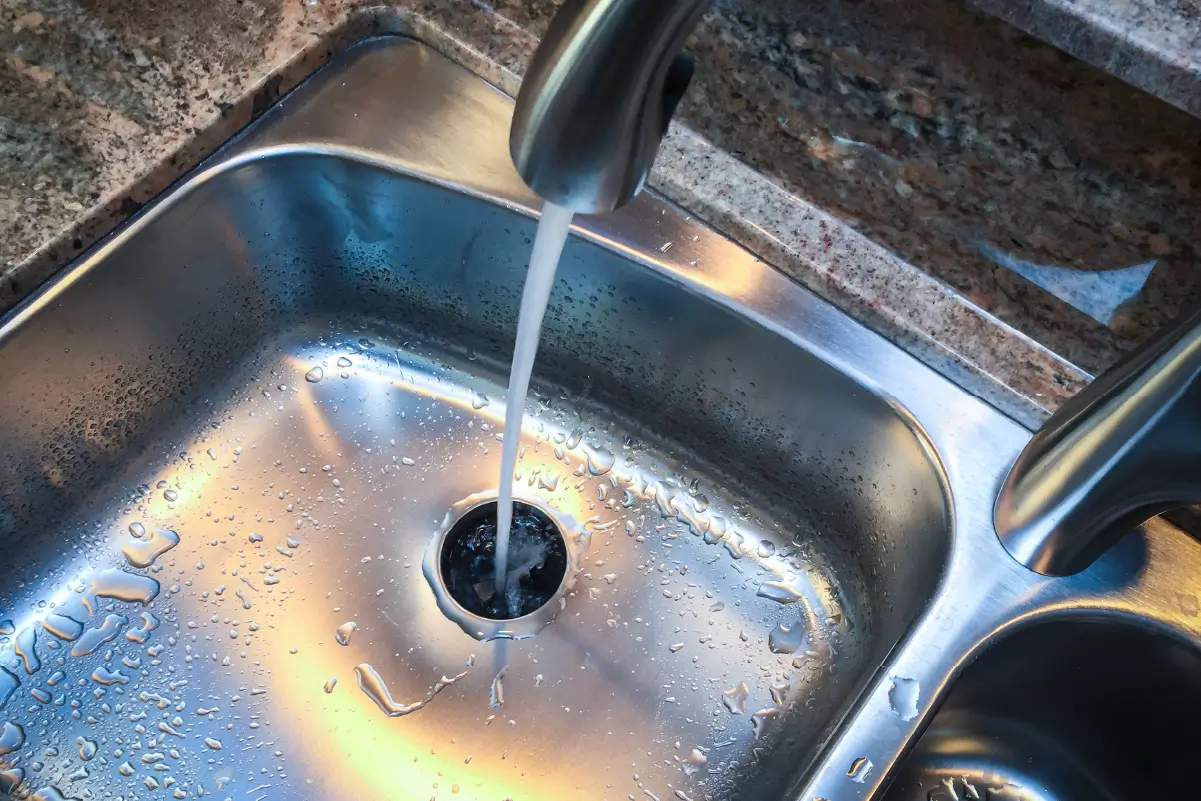How To Unclog a Garbage Disposal in 7 Quick Steps

|
Required Time |
Skill Complexity |
Cost |
|
Less than 30 minutes |
Easy |
Free with basic tools |
A clogged garbage disposal can make it difficult to use your kitchen sink and can cause unpleasant odors to seep from your drain. Thankfully, learning how to unclog a garbage disposal (or a garburator) requires only basic DIY skills.
We'll walk you through how to unclog a garbage disposal without taking it apart. If you don't like tackling the task or these steps aren't enough, contact an appliance service professional. Either way, it’s best to tackle the issue soon; clogged disposal can produce smells.
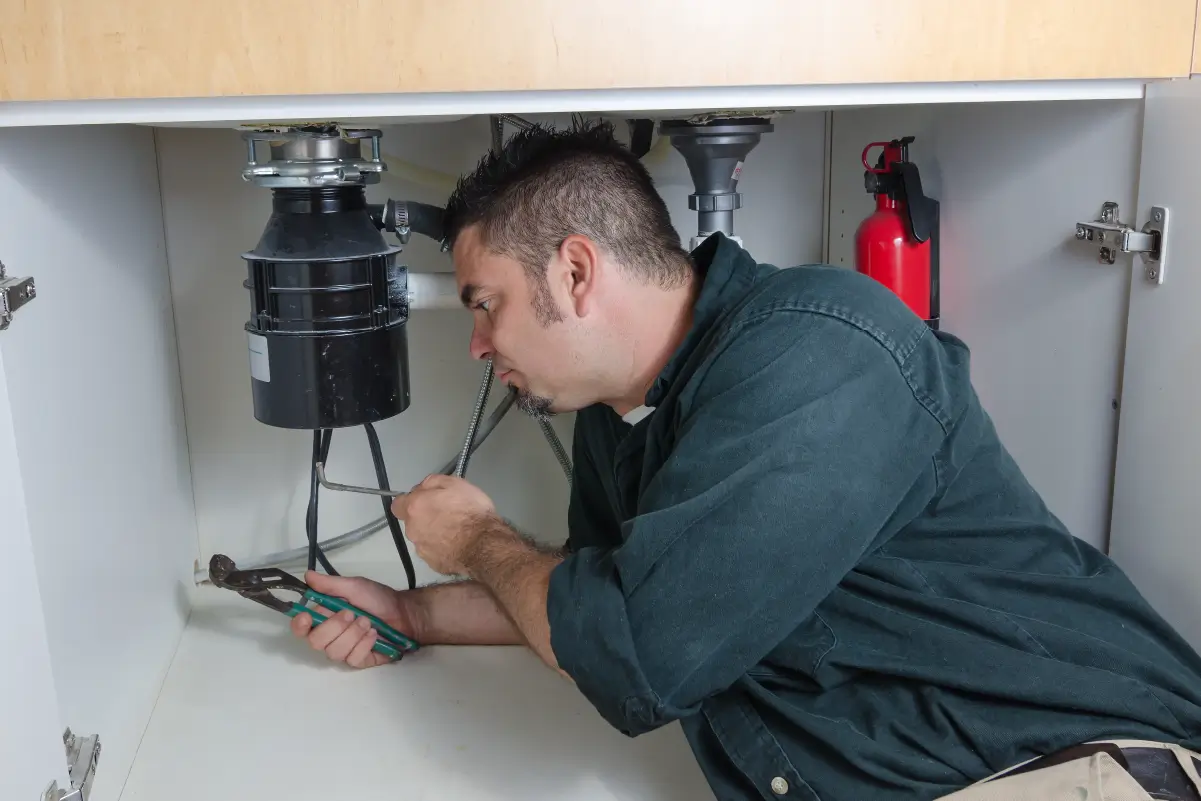
1. Reset the Disposal
You may need to reset your garbage disposal if it isn't operating correctly. When a garbage disposal encounters a jam or overheats, it may trip a safety switch, which you’ll need to reset before using the appliance again.
The reset button is likely at the bottom of the disposal or on the base — check your garbage disposal's official user manual to help locate it. Once you have located the button, press it and turn on the power to see if it begins to work again.
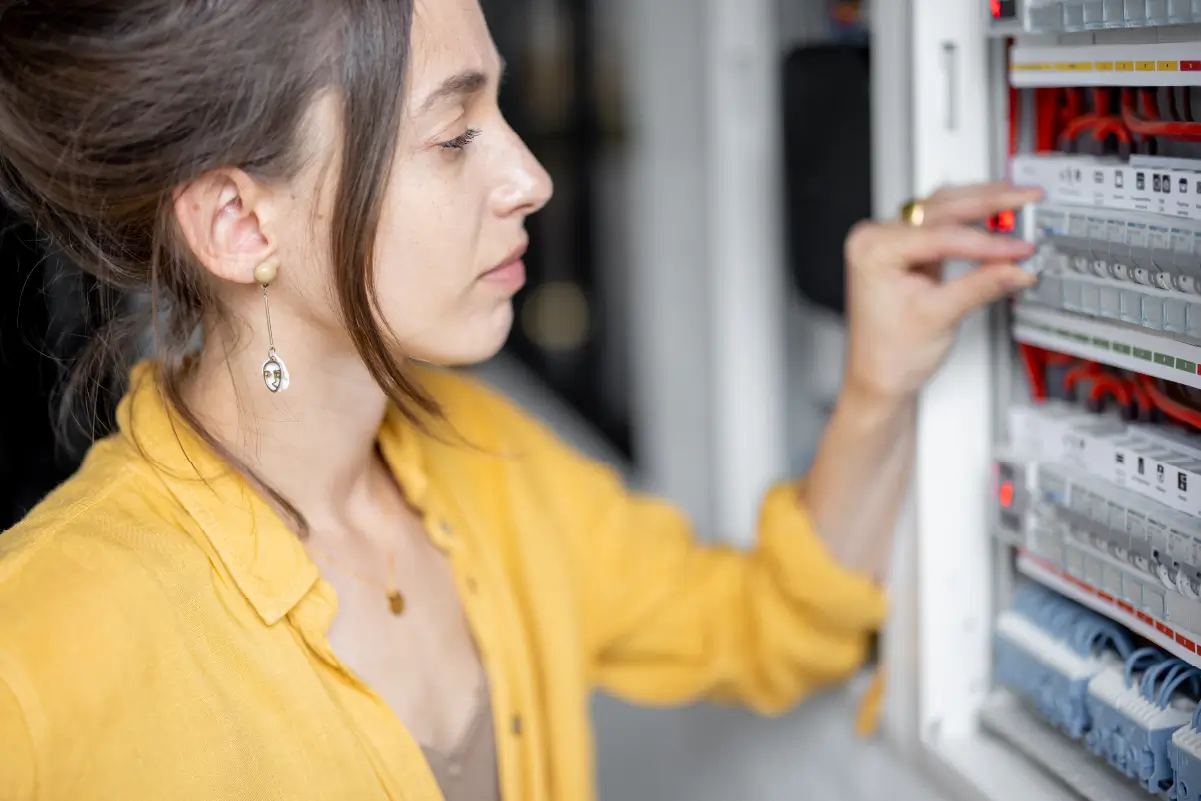
2. Disconnect The Power
A garbage disposal is a powerful appliance that can be dangerous if not handled correctly. Before working on your garbage disposal, it is vital to ensure the power is disconnected, keeping you safer while working on it.
If your garbage disposal acquires its power via an under-sink outlet, unplug it. If your garbage disposal does not plug into an outlet and is wired directly into your wall, you'll need to shut off the power from your breaker box. To ensure you have turned off the correct breaker, attempt to turn on the garbage disposal. Begin work only when you are confident the power is off.
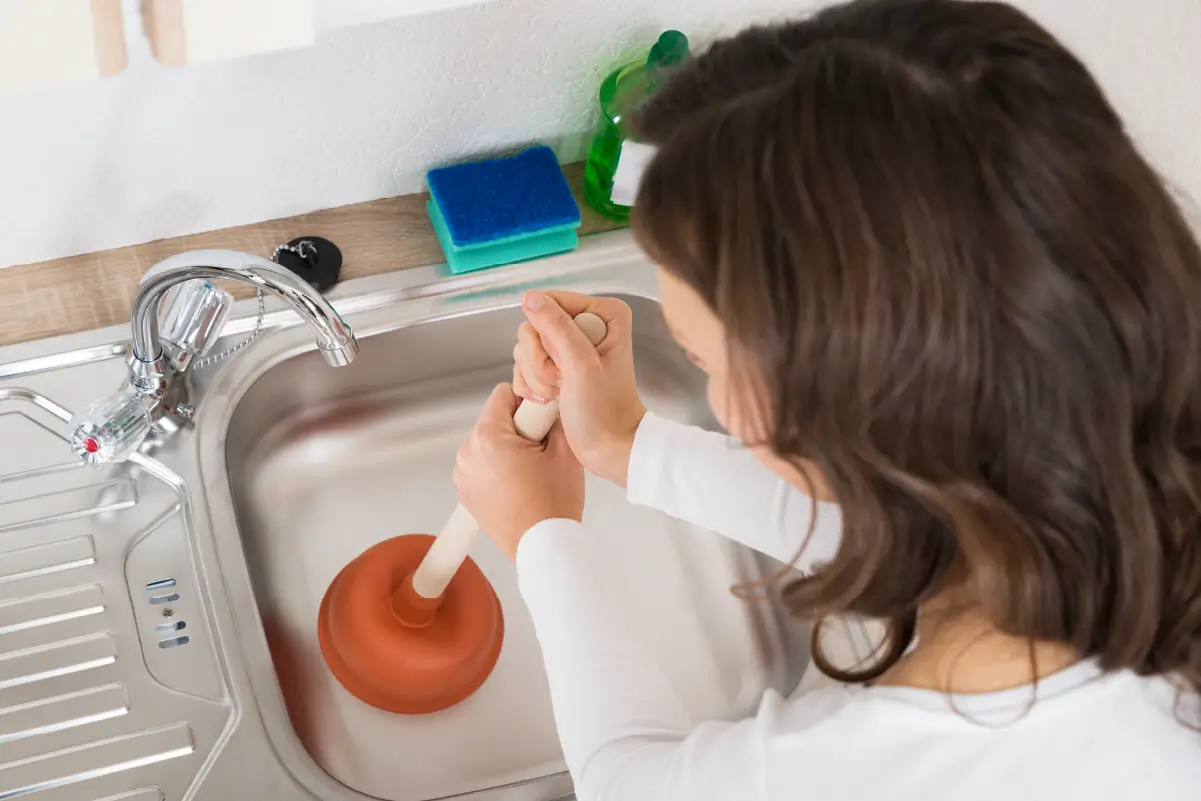
3. Drain Any Water
Before proceeding, you should know how to unclog a kitchen sink with standing water from your garbage disposal. Here is how to remove the water before proceeding with the rest of the DIY repair.
- Begin by removing your sink's stopper if there is one in place.
- Then, use a flat plunger to plunge the sink to clear the clog enough to allow water to drain.
- If plunging doesn’t solve the problem, you can bail the water out of the sink using a cup and/or a bucket.
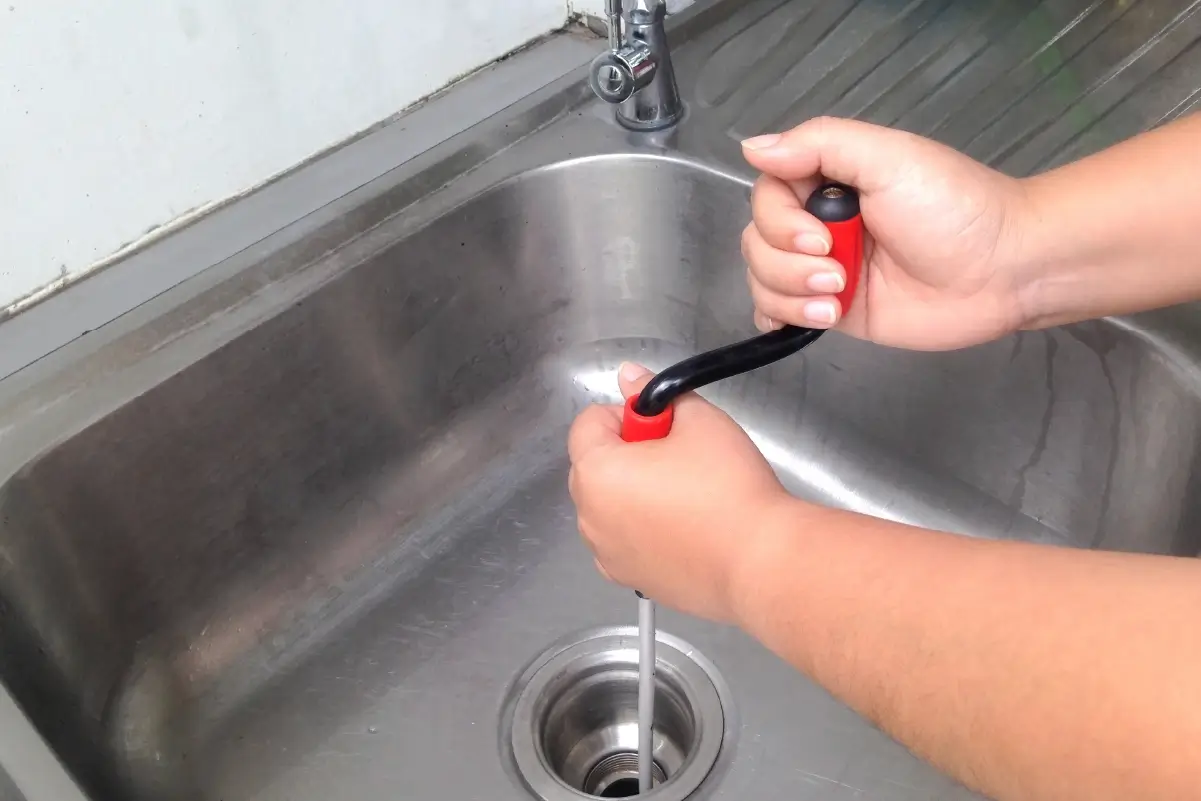
4. Remove Waste with Tongs or Pliers
You may be able to clear a garbage disposal clog with a pair of tongs or needle-nose pliers if the jammed items are visible. After following our previous steps to disconnect the electrical supply and drain any water, you can insert your tool into the drain. Be sure not to press down on the clog when you attempt to clear it, as this may pack the lodged items tighter into the drain.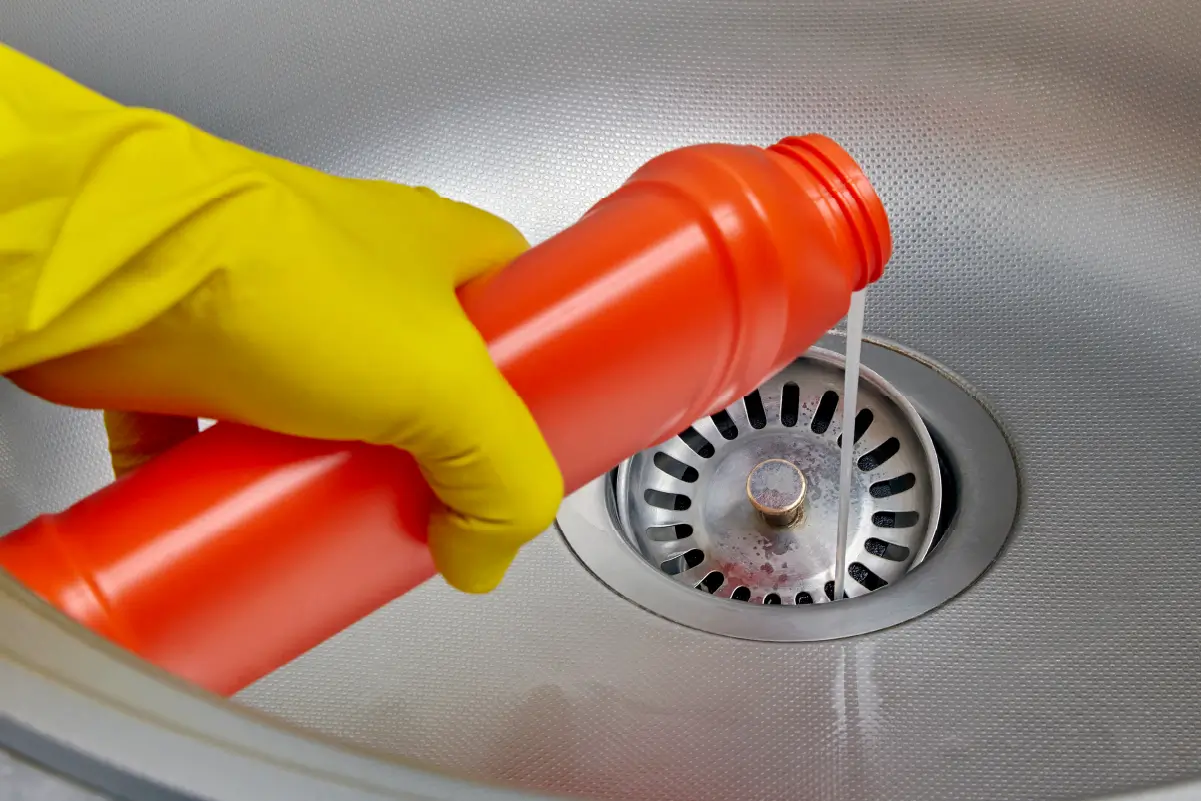
5. Use a Cleaning Solution
If plunging your kitchen sink isn't enough to remove the clog, try to remove the blockage using a cleaning solution. While commercial clog removal solutions are available from your local hardware store, you can first attempt the process using an at-home solution.
- Start by pouring a kettle of boiling water down your drain, followed by a cup of baking soda.
- Next, add a 2-cup solution of half vinegar and half water to your drain. Allow the solution to sit for 10 minutes.
- Then, pour boiling water down the drain again.
- If the water drains slowly but the clog is not completely cleared, add more hot water and use a plunger again to see if you can clear the clog.
- Lastly, if the homemade solution doesn't clear your drain, you may want to try a commercial cleaning solution.
6. Turn the Disposal Impellers
If your garbage disposal refuses to operate, you may need to turn the disposal's impellers. The impellers are the blades that chop up your food; if they become jammed, you must manually turn them to clear the issue. If you previously turned your disposal's power on again, be sure to turn it off before continuing.
Most disposals have a turning hole that enables you to turn the impellers manually using a hex or Allen key. Locate the proper hole using your garbage model's user manual for assistance. Rotate the turning hole a few times to manually turn the blades. If you cannot turn the blades, contact a service professional.

7. Check the Fittings
If your garbage disposal appears to be running correctly but still has a clog, the problem may simply be a clogged pipe. Check the sink's P- or S-shaped fitting just past the disposal discharge pipe and follow these instructions:
- After locating the P or S-shaped fitting underneath your sink, place an empty bucket below the pipe to catch any excess water.
- If you tried to unclog the drain with a chemical earlier, put on a pair of Nitrile gloves to protect your hands and a pair of safety glasses in case the water splashes.
- Next, loosen the nut on the pipe using channel-type pliers.
- Check for debris build-up and clear it using a small brush.
- Assemble the pipe and test to see if the clog is resolved.
How to Prevent Garbage Disposal Clogs
Learning how to prevent garbage disposal clogs is relatively easy. A garbage disposal converts food scraps into liquid waste using water and mechanics. For a clog to form, sufficient material must block the flow of water down the drain. Here are ways to prevent such clogs from forming:

Don’t Insert The Wrong Food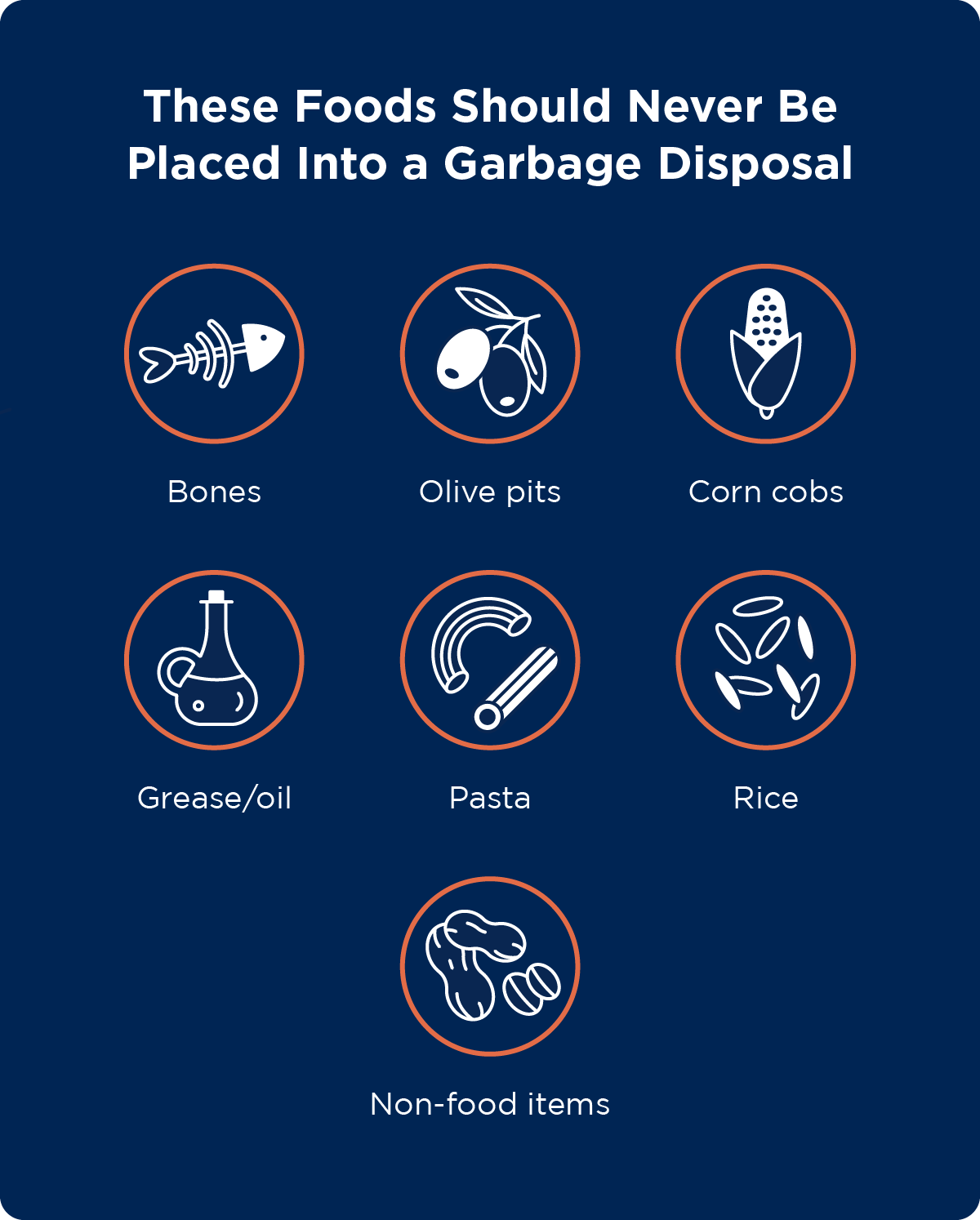
Not everything should go into a garbage disposal. Ground items such as eggshells or coffee grounds become tiny grains that can adhere to any existing sludge and cause a clog. Additionally, banana peels, celery, artichokes, and other fibrous foods entangle with different materials and catch on the impellers.
These foods should never be placed into a garbage disposal:
- Bones
- Olive pits
- Corn cobs
- Grease/Oil
- Pasta
- Rice
- Nonfood items
Pro Tip: Do you need a space-saving disposal method for nonfood items? Consider using a trash compactor to fit more garbage into a single bag — good for your back on garbage day and the environment.
Feed The Disposal Slowly
It may be tempting to quickly feed your garbage disposal, but this may cause a clog. Cut up more oversized items into bite-sized pieces and feed them gradually into your disposal — never attempt to jam or pack your disposal with food. Speed is the key; don’t rush the process and allow the disposal time to process inserted foods.
Use Ample Amounts of Water
Once the garbage disposal finely grinds the food waste, it requires an adequate water supply to continue flowing through the drainage system. Lack of water can cause these materials to build up sufficiently to clog the disposal and prevent water from penetrating. Keep the water running for at least 30 seconds after you’re done grinding.
Use Only Cold Water
You should only use cold water when using your garbage disposal. While some think hot water will assist with the process, it does not. Instead, hot or warm water can cause fats and grease to liquefy, sticking to your drain. Cold water will keep your food solid as it moves down your drain.
Garbage Disposal Unclogging FAQ
If you aren't familiar with garbage disposals, you may have additional questions about the troubleshooting process — luckily, we are here to help! These are the most commonly asked questions about unclogging garbage disposals.
What Can I Use To Unclog My Garbage Disposal?
Once you turn your garbage disposal's power off, you can attempt to unclog it using a pair of tongs or needle-nose pliers. You can also utilize a cleaning solution to break down any stuck food. Commercial solutions and DIY recipes using baking soda, hot water, and vinegar are available.
How Do You Unjam a Garbage Disposal?
To unjam a garbage disposal, disconnect the power before working on it, then remove any excess water from your kitchen sink. You can attempt to unjam your disposal using a pair of tongs or a cleaning solution. If jammed, your disposal may need to be reset or have the impellers manually rotated.
Why Is My Garbage Disposal Not Draining?
There may be a clog if your garbage disposal is not properly draining. If you insert the wrong food, feed your disposal too quickly, or don't use enough cold water, it may develop a clog. You must unclog your garbage disposal to allow it to drain and continue regular operation.
Will Baking Soda and Vinegar Unclog a Garbage Disposal?
Baking soda and vinegar can help to unclog a garbage disposal. First, pour a kettle of hot boiling water down your drain. Follow the water with a cup of baking soda and a 2-cup solution of half water and vinegar. After sitting for 10 minutes, add another kettle of boiling water and see if you have remedied the clog.
Schedule Your Garbage Disposal Maintenance with Your Local Mr. Appliance
Learning how to unclog a garbage disposal drain is a great way to get your kitchen appliance back up and running. But what if a DIY approach isn't enough and your disposal continues to give you issues? Call in the service professionals from your local Mr. Appliance to assist. Keep all your appliances running smoothly with reliable service and maintenance backed by the Neighborly Done Right Promise™️.
Schedule today with your local Mr. Appliance for garbage disposal repair or other home appliance maintenance needs.
 Click to call
Click to call

